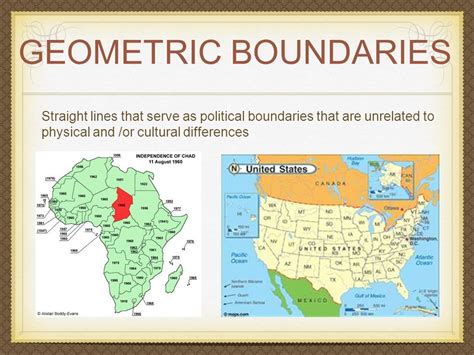Administered boundaries play a pivotal role in shaping our world, defining jurisdictions, and establishing authority. From nation-states to municipal districts, these boundaries create a framework for governance and ensure the orderly administration of laws and regulations.

What is an Administered Boundary?
An administered boundary is a designated geographical area subject to the authority of a specific governing body. It establishes the limits of jurisdiction and the responsibilities of that body within its territory. Administered boundaries can vary in size, encompassing vast regions or confined to specific neighborhoods.
Types of Administered Boundaries
Administered boundaries come in diverse forms, each serving a distinct purpose:
- Political Boundaries: Define the borders of nations, states, and provinces, establishing geopolitical divisions and sovereign territories.
- Administrative Boundaries: Divide larger territories into smaller units, such as counties, municipalities, and districts, for administrative purposes.
- Functional Boundaries: Establish areas dedicated to specific functions or services, such as school districts, police precincts, or zoning zones.
- Economic Boundaries: Demarcate areas with distinct economic policies or regulations, such as free trade zones or tax havens.
Significance of Administered Boundaries
Administered boundaries have profound implications for society:
- Governance: Boundaries define the scope of authority for governing bodies, ensuring the efficient exercise of power and accountability.
- Resource Allocation: Boundaries guide the distribution of resources and services, such as funding, infrastructure, and public safety.
- Demographic Analysis: Boundaries facilitate the collection and analysis of demographic data within specific territories, enabling targeted policy-making.
- Social Cohesion: Boundaries can promote a sense of community and shared identity among residents within a defined area.
Examples of Administered Boundaries
Administered boundaries are ubiquitous in modern society:
- Country Borders: The boundaries between nations, such as the United States-Mexico border, establish territorial sovereignty and immigration policies.
- City Limits: Municipal boundaries define the areas governed by city councils and mayors, responsible for local services and ordinances.
- School Districts: Boundaries establish school districts within which students attend specific schools, providing equitable access to education.
- Zoning Ordinances: Boundaries划分区域用于特定用途,例如住宅、商业和工业。
Applications of Administered Boundaries
Administered boundaries have wide-ranging applications, particularly in the fields of:
- Public Administration: Boundaries optimize the provision of public services and infrastructure, matching resources to specific needs.
- Urban Planning: Boundaries guide the development and growth of cities by defining land-use zones and regulating construction.
- Environmental Management: Boundaries establish protected areas, such as national parks and wildlife sanctuaries, conserving ecosystems and biodiversity.
- Infrastructure Development: Boundaries facilitate the planning and implementation of infrastructure projects, connecting communities and supporting economic growth.
Administered Boundaries in the Future
With the advent of technology and globalization, administered boundaries are evolving:
- Virtual Boundaries: The internet has created virtual boundaries, such as domain names and online communities, redefining the concept of territory and jurisdiction.
- Flexible Boundaries: Boundaries are becoming more flexible to accommodate changing needs, such as dynamic school district boundaries based on student enrollment.
- Shared Boundaries: Cooperation between neighboring jurisdictions is increasing, leading to shared services and joint governance across boundaries.
- Data-Driven Boundaries: Big data analytics is being used to refine boundaries based on real-time information, improving resource allocation and decision-making.
Tips for Effective Boundary Administration
Effective boundary administration requires thoughtful planning and implementation:
- Define Boundaries Clearly: Boundaries should be clearly defined and communicated to all stakeholders to minimize confusion and disputes.
- Consider Local Input: Involve local communities in the boundary definition process to ensure their needs and preferences are considered.
- Monitor and Adjust: Boundaries should be regularly reviewed and adjusted as circumstances change to maintain their relevance and effectiveness.
- Enforce Boundaries Fairly: Enforcement of boundaries should be consistent and equitable to uphold the rule of law and maintain public confidence.
Conclusion
Administered boundaries are indispensable tools for organizing and managing human society. By defining territories and establishing responsibilities, they enable effective governance, equitable resource distribution, and social cohesion. As technology and globalization reshape the world, boundaries continue to evolve, adapting to new challenges and opportunities. By understanding and applying the principles of boundary administration, we can harness their power to create a more just, sustainable, and prosperous future.
Tables
Table 1. Types of Administered Boundaries
| Type | Purpose | Examples |
|---|---|---|
| Political | Divide nations and sovereign territories | Country borders, state boundaries |
| Administrative | Subdivide larger territories for administrative purposes | Counties, municipalities, districts |
| Functional | Establish areas for specific functions or services | School districts, police precincts, zoning zones |
| Economic | Demarcate areas with distinct economic policies or regulations | Free trade zones, tax havens |
Table 2. Significance of Administered Boundaries
| Importance | Impact |
|---|---|
| Governance | Define the scope of authority for governing bodies |
| Resource Allocation | Guide the distribution of resources and services |
| Demographic Analysis | Facilitate the collection and analysis of demographic data |
| Social Cohesion | Promote a sense of community and shared identity |
Table 3. Applications of Administered Boundaries
| Field | Application |
|---|---|
| Public Administration | Optimize the provision of public services and infrastructure |
| Urban Planning | Guide the development and growth of cities |
| Environmental Management | Establish protected areas and conserve ecosystems |
| Infrastructure Development | Facilitate the planning and implementation of infrastructure projects |
Table 4. Tips for Effective Boundary Administration
| Tip | Explanation |
|---|---|
| Define Boundaries Clearly | Establish precise and unambiguous boundaries to minimize confusion |
| Consider Local Input | Engage local communities to ensure boundaries reflect their needs and preferences |
| Monitor and Adjust | Regularly review and adjust boundaries to maintain their relevance and effectiveness |
| Enforce Boundaries Fairly | Apply enforcement consistently and equitably to uphold the rule of law |
